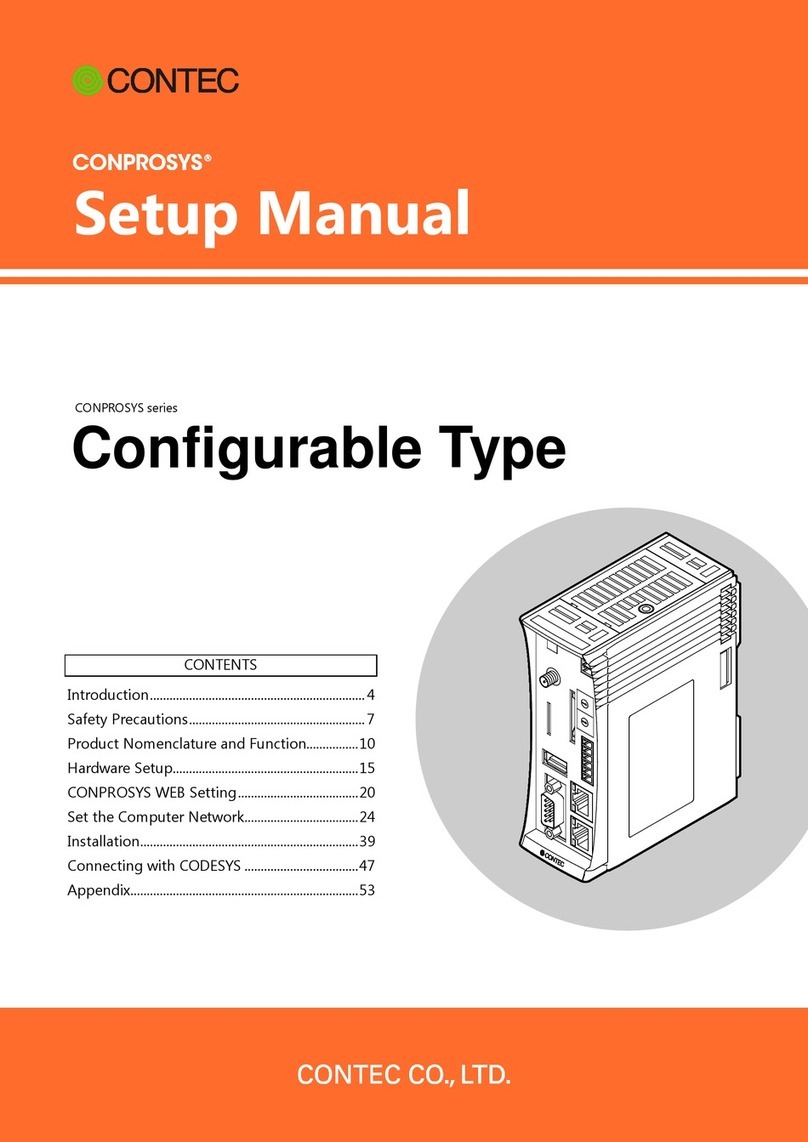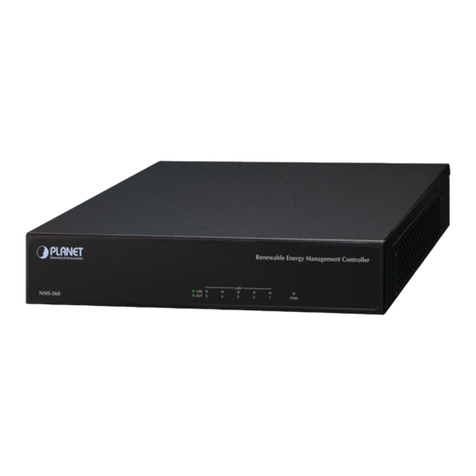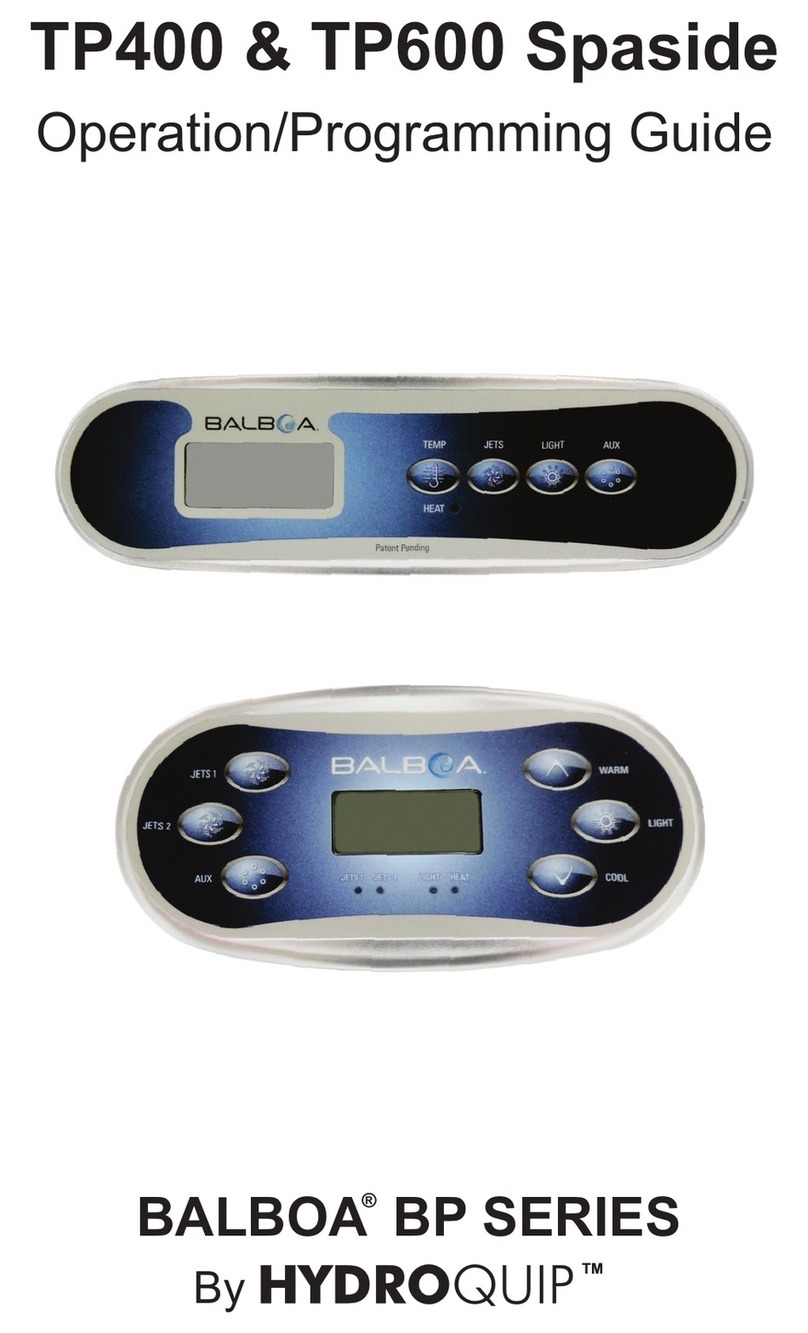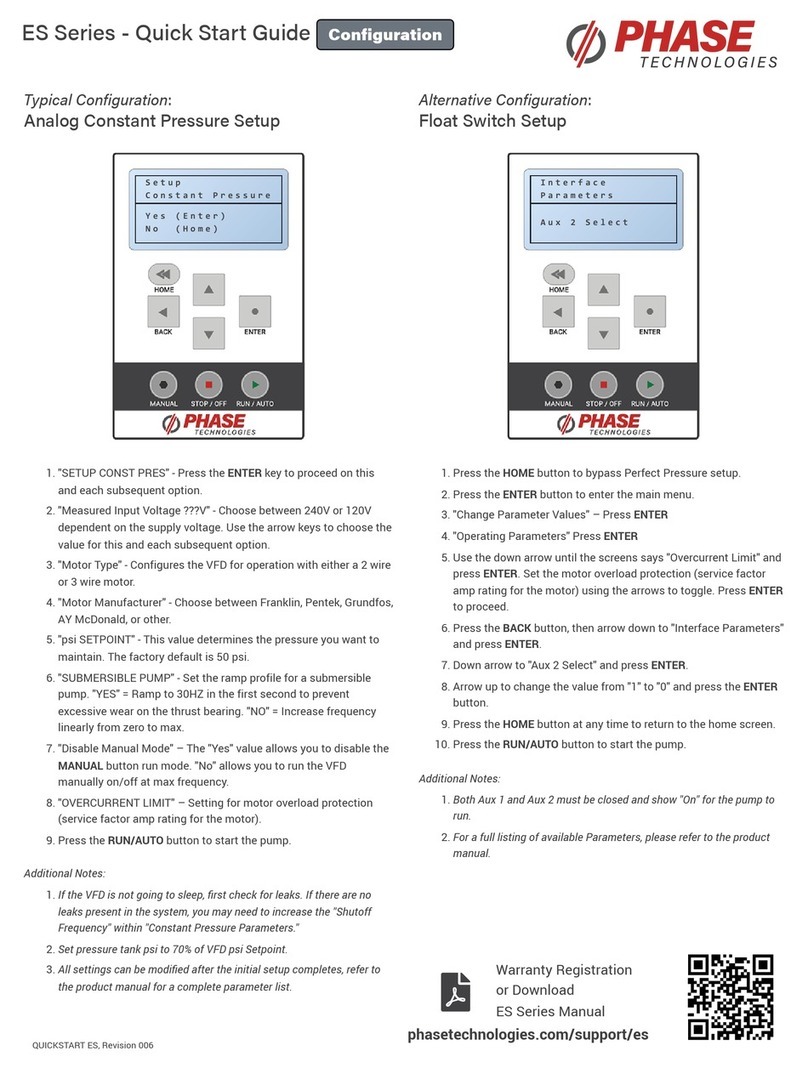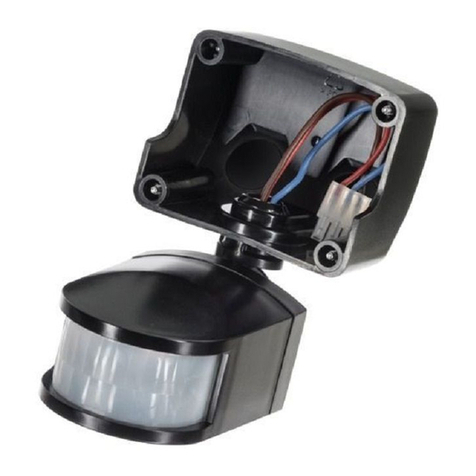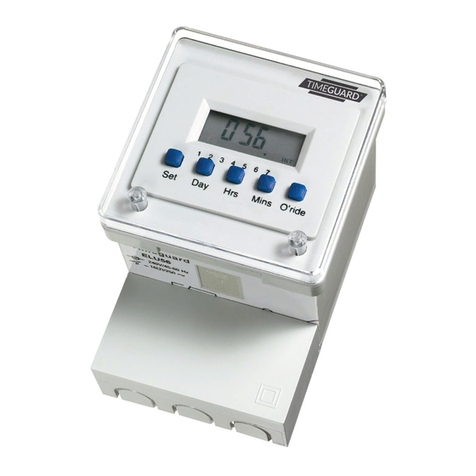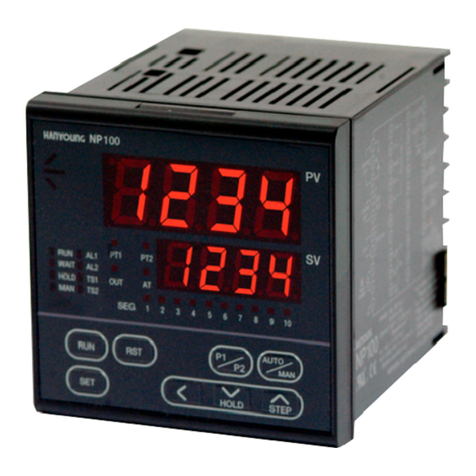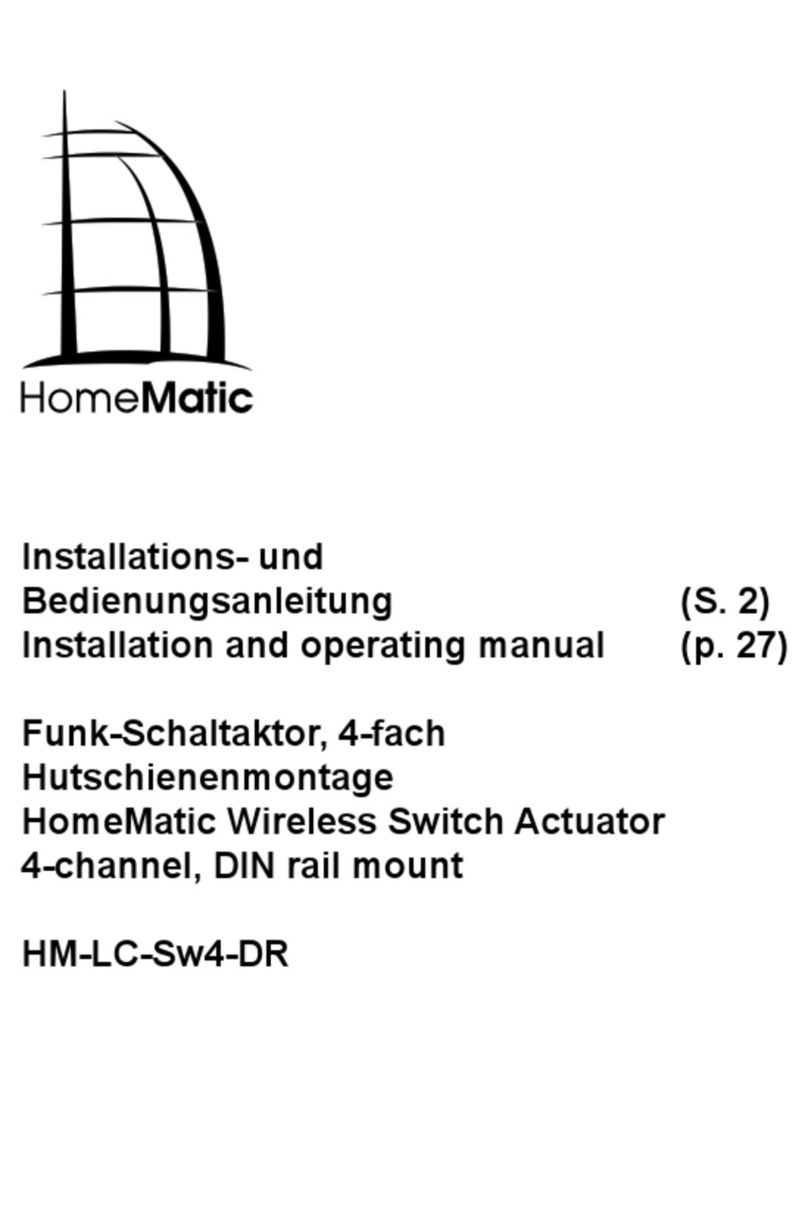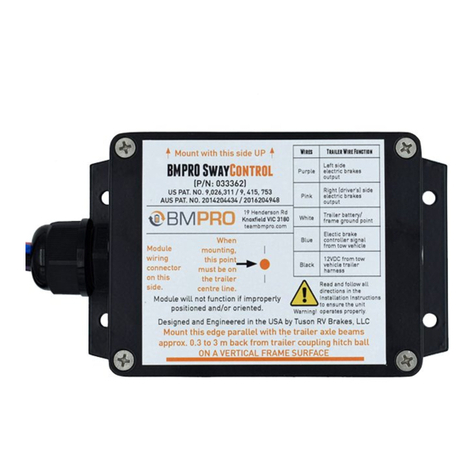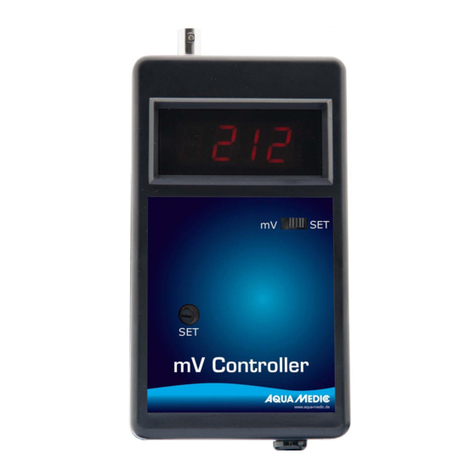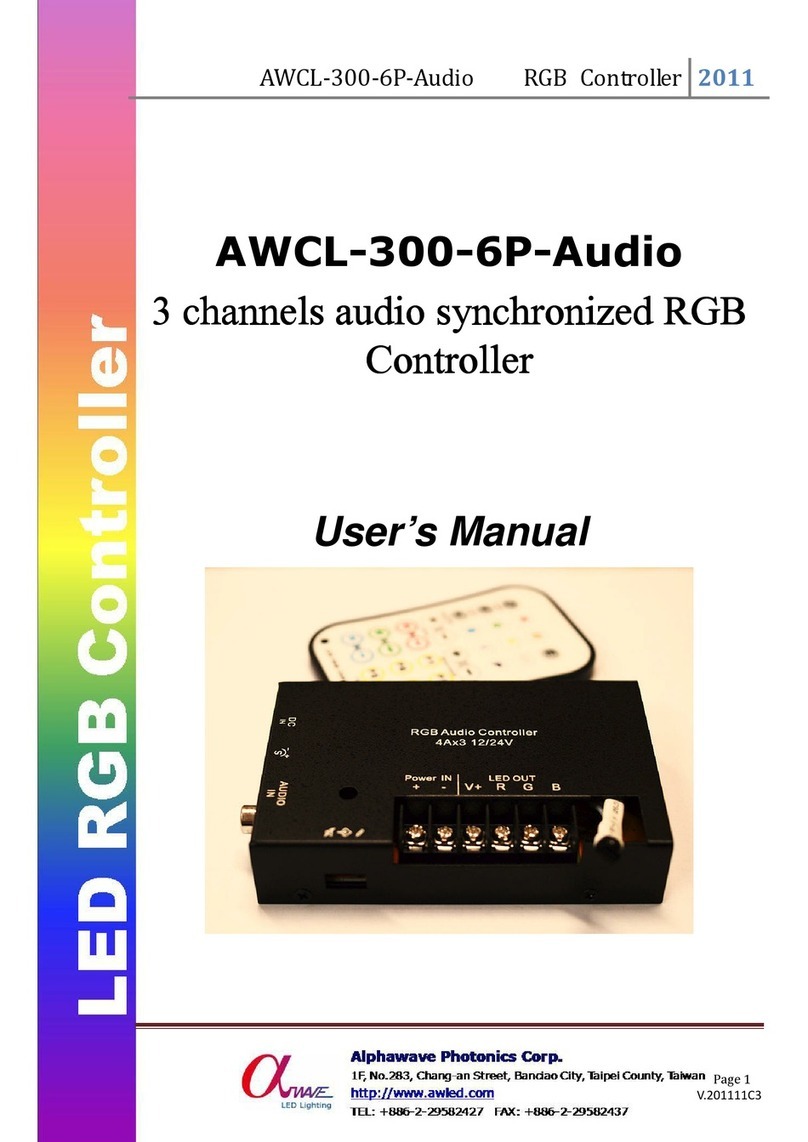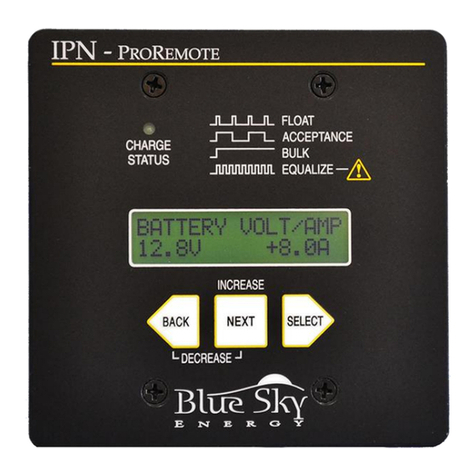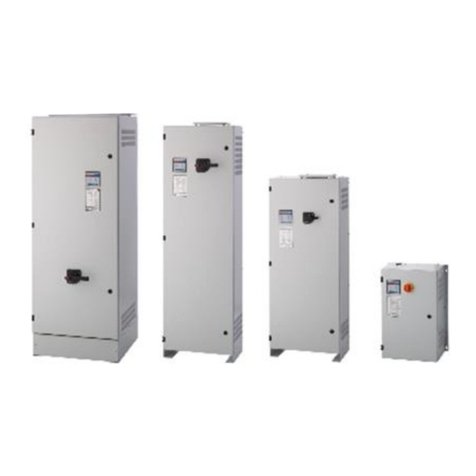
P.33 -Soglia oltre la quale il ritardo integrale di intervento del sovraccarico viene
azzerato, provocando l’intervento immediato dell’allarme.
P.34 – P.35 – Dati dei TV eventualmente utilizzati negli schemi di collegamento.
P.36 – Unità di misura temperatura.
P.37 – P.38 – Temperature di start e stop ventola di raffreddaento del quadro,
espresse nell’unità di misura impostata con P.36. La ventola viene avviata quando la
temperatura è >= a P37, e viene arrestata quando è < di P.38.
P.39 – Soglia di allarme per la generazione dell’allarmeA08 temperatura troppo alta.
P.40 – Soglia percentuale della potenza residua degli step, confrontata con quella
originale programmata. Sotto questa soglia viene generato l’allarme A10 step
difettoso.
P.41 – Soglia di allarme di massima tensione, riferita alla tensione nominale
impostata con P.07, oltre la quale viene generato l’allarme A06 Tensione troppo alta.
P.42 – Soglia di allarme di minima tensione, riferita alla tensione nominale impostata
con P.07, oltre la quale viene generato l’allarme A05 Tensione troppo bassa.
P.43 – Soglia di allarme di massimo THD di tensione impianto, oltre la quale viene
generato l’allarme A10 THDV troppo alto.
P.44 – Soglia di allarme di massimo THD di corrente impianto, oltre la quale viene
generato l’allarme A11 THDI troppo alto.
P.45 – Intervallo di manutenzione in ore esaurito il quale viene generato l’allarme
A12 Richiesta manutenzione. Il conteggio è attivo per tutto il tempo in cui
l’apparecchio rimane alimentato.
P.46 – Funzione della barra grafica semicircolare.
Kvarins/tot : la barra rappresenta quanta potenza rifasante è attualmente inserita in
rapporto alla totale installata nel quadro.
Corratt/nom: Percentuale di corrente attuale rispetto alla nominale del TA.
Delta kvar: Barra con zero centrale. Rappresenta il delta-kvar positivo/negsativo
necessario a raggiungere il setpoint riferito alla potenza totale installata.
P.47 – Misura di default visualizzata sul display secondario. Impostando ROT le
miusurevengono visualizzate a rotazione.
P.48 – Se impostato ad ON, la retroilluminazione del display lampeggia in presenza
di un allarme.
P.49 – Indirizzo seriale (nodo) del protocollo di comunicazione.
P.50 – Velocità di trasmissione della porta di comunicazione.
P.51 – Formato dati. Impostazioni a7 bit possibili solo per protocollo ASCII.
P.52 – Numero bit di stop.
P.53 – Scelta del protocollo di comunicazione.
P.54 – Definisce il numero di manovre degli step (considerando lo step che ha il
conteggio più alto) oltre il quale viene generato l’allarme di manutenzione A12.
Questo parametro va usato in alternativa a P.45. Se sia P45 che P.54 sono impostati
ad un valore diverso da OFF, ha priorità P.45.
P.55 … P60 – Funzione dei relè di uscita 9…14. Vedere descrizione P11.
P.33 - Threshold beyond which the integral delay for tripping of the overload alarm
is zeroed, causing the immediate intervention of the A08 alarm.
P.34 – P.35 – Data of VTs eventually used in the wiring diagrams.
P.36 – Unit of measure for temperature.
P.37 – P.38 - Start and stop temperature for the cooling fan of the panel,
expressed in the unit set by P.36. The cooling fan is started when the temperature
is >= to P.37 and it is stopped when it is < than P.38.
P.39 - Threshold for generation of alarm A08 Panel temperature too high
.
P.40 - Percentage threshold of the residual power of the steps, compared with the
original power programmed in general menu. Below this threshold the alarm A10
step failure is generated.
P.41 - Maximum voltage alarm threshold, referred to the rated voltage set with
P.07, beyond which the alarm A06 Voltage too high is generated.
P.42 - Undervoltage alarm threshold, referred to the rated voltage set with P.07,
below which the alarm A05 voltage too low is generated.
P.43 - Maximum plant voltage THD alarm threshold, beyond which the alarm A10
THDV too high is generated.
P.44 – Maximum plant current THD alarm threshold beyond which the alarm A05
voltage too low is generated.
P.45 – Maintenace interval in hours. When it is elapsed, the alarm A12
maintenance interval will be generated. The hour count increments as long as the
device is powered.
P.46 – Function of the semi-circular bar-graph.
Kvar ins/tot: The bar graph represents the amount of kvar actually inserted, with
reference to the total reactive power installed in the panel.
Curr act/nom: Percentage of actual plant current with reference to the maximum
current of the CT.
Delta kvar: bar graph with central zero. It represts the positive/negative delta-kvar
needed to reach the setpoint, compared to the total kvar installed.
P.47 – Default measure shown on the secondary display. Setting the parameter to
ROT, the different measures will be shown with a sequential rotation.
P.48 – If set to ON, the display backlight flashes in presence of one or more active
alarms.
P.49 – Serial (node) address of the communication protocol.
P.50 – Communication port transmission speed.
P.51 – Data format. 7 bit settings can only be used for ASCII protocol.
P.52 – Stop bit number.
P.53 – Select communication protocol.
P.54 - Defines the number of step switchings (considering the step that has the
highest count) beyond which the maintenance alarm A12is generated. This
parameter should be used as an alternative to P.45. If both P45 and P.54 are set
to a value other than OFF, then P.45has priority.
Function of output relays 9…14. See description of parameter
COD D SCRIZION AC
C
Ud
M
D F RANG
P.61 Abilitazione allarme A01
Adv
ALA
OFF
ON
ALA
DISC
P.62 Ritardo allarme A01
Adv
15 0-240
P.63 Udmritardo A01
Adv
min Min
… …. … … … …
P.97 Abilitazioneallarme A13
Adv
ALA
OFF
ON
ALA
DISC
A+D
P.98 Ritardo allarme A13
Adv
15 0-240
P.99 Udm ritardo A13
Adv
min Min
Sec
P.61 – Abilita l’allarme A01 e definisce il comportamento della centralina quando
l’allarme è attivo:
OFF – Allarme disabilitato
ON – Allarme abilitato, solo visivo
ALA – Allarme abilitato, attivazione relè di allarme globale (se impostato)
DISC – Allarme abilitato, disconnessione degli step se il regolatore è in modalità
automatica
A + D = ccitazione relè di allarme e disconnessione degli step se la centralina è
in modalità automatica.
Nota: quando si accede ai parametri P61, P.64, P67 ecc, il display ausiliario
indica l codice dell’allarme relativo.
P.62 – Tempo di ritardo allarme A01.
COD D SCRIPTION AC
C
Uo
M
D F RANG
P.61 A01 Alarm enable
Adv
ALA
OFF
ON
ALA
DISC
P.62 A01 alarm delay
Adv
15 0-240
P.63 A01 delay uom
Adv
min Min
… …. … … … …
P.97 A13 Alarmenable
Adv
ALA
OFF
ON
ALA
DISC
A+D
P.98 A13 alarm delay
Adv
120 0-240
P.99 A13 delay uom
Adv
sec Min
Sec
P.61 - nable alarm A01 and defines the behavior of the controller when the alarm
is active:
OFF– Alarmdisabled
ON– Alarm enabled, only visual
ALA– Alarmenabled, global alarm relay energized (if set)
DISC– Alarm enabled, logoff step if the controller is in automatic mode
A + D = Alarm relay energized and disconnection of the steps if the controller is in
automatic mode.
Note: when you access the parameters P61, P.64, P67, etc., the auxiliary
display shows the relative alarm code.




















